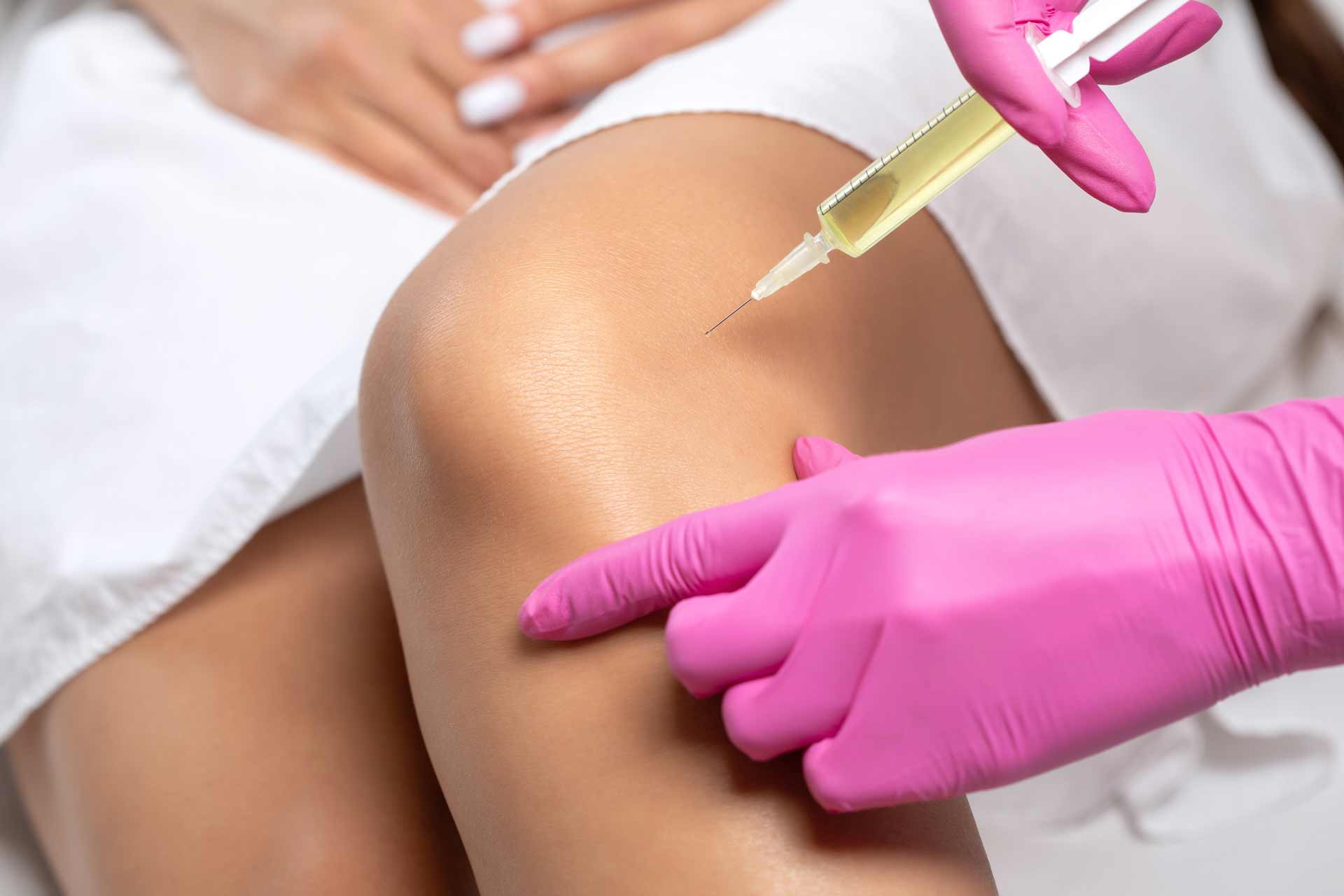PRP Therapy For Knees
A promising option for knee joint regeneration



PRP therapy for knees is a regenerative treatment that uses your own blood to repair and reduce inflammation, potentially leading to pain relief and improved joint function, in addition to optimizing results while minimizing risks.
Tadawi Medical Center offers PRP therapy for knees for patients seeking alternatives to surgery or as part of a comprehensive knee treatment plan.
Does PRP really work for knees?
Yes, PRP therapy for knees can be effective, especially for treating mild to moderate osteoarthritis and soft tissue injuries.
PRP therapy involves drawing a small amount of your blood, processing it to concentrate platelets, and then injecting the concentrated prp for knee osteoarthritis.
Plasma platelet knee injections contain growth factors that can stimulate tissue repair and reduce inflammation, but results can vary based on factors like the severity of the condition and the individual’s response.
It’s essential to use it in conjunction with other treatments, such as physical therapy and lifestyle modifications, to achieve optimal results.
How long does PRP last in the knee?
The effects of PRP for knee arthritis can last anywhere from 6 months to 12 months, depending on factors like the severity of the condition, the individual’s healing response, lifestyle factors and the number of treatments received.
Some patients experience significant pain relief and improved function for an extended period, especially when combined with proper physical therapy and lifestyle modifications, including regular exercise and a balanced diet.
Regular follow-up treatments may be recommended to maintain the benefits. Consult your doctor for personalized advice.
How many PRP sessions are needed for the knee?
The number of PRP therapy for knees sessions depends on the severity of the condition and individual response to treatment. Generally, a series of 2-3 injections, spaced a few weeks apart, is recommended for mild to moderate cases and 3-5 sessions for severe cases
However, your doctor will assess your condition, create a tailored plan, and recommend the appropriate number of sessions for optimal results.
What is the success rate of PRP therapy for knees?
The success rate of plasma injection for knee issues, osteoarthritis or ligament injuries varies depending on the severity of the condition but is generally positive.
The success rate is typically around 60–80% in reducing pain and improving joint function based on the severity of the condition, the technique used, and the patient’s adherence to recovery protocols, but in severe osteoarthritis or injuries, prp for knee arthritis effectiveness can be lower but still beneficial in certain cases.
How painful is PRP injection in the knee?
The pain associated with plasma rich platelet therapy for knees is typically mild to moderate and varies by individual depending on factors such as the injection site and the individual’s pain tolerance.
Patients often describe the sensation as discomfort or pressure after the injection rather than severe pain, stemming from the needle insertion and the injection itself and usually subsiding within a few days.
Local anesthetics can be used to minimize pain during the procedure, and it’s important to consult with a healthcare professional to discuss any concerns about pain or discomfort before undergoing the procedure and discuss specific guidance and pain management strategies.
Can you walk after PRP knee injection?
Yes, you can typically walk after a prp for knee arthritis; you may experience some mild discomfort or soreness, but most people are able to walk immediately after the procedure.
However, it’s important to follow the post-procedure guidelines provided by your healthcare provider for the best recovery outcomes and minimize discomfort, which may include:
- Rest: Avoiding strenuous activities for a few days like running, jumping, or intense exercise.
- Physical Therapy: Undergoing physical therapy to strengthen the joint and improve range of motion.
- Ice: Applying ice packs to the knee to reduce swelling.
- Elevation: Elevating the leg to minimize swelling.
Is plasma PRP for knee arthritis harmful?
PRP therapy for knees is generally considered safe when performed under the supervision of a qualified doctor. However, potential risks include infection, allergic reactions, or temporary pain at the injection site.
It’s important to consult with a specialist to evaluate your health condition and medical history and to understand the benefits and risks of this procedure, ensuring the best decision for your situation.
What is the cost of PRP therapy for knee?
Plasma therapy for knees costs $400 which is 1500 QR for both knees, the procedure is performed by an Orthopedic Surgeon.
For appointments and more information call or Whatsapp Tadawi Medical Center at +974 4041 4243.
BOOK NOW